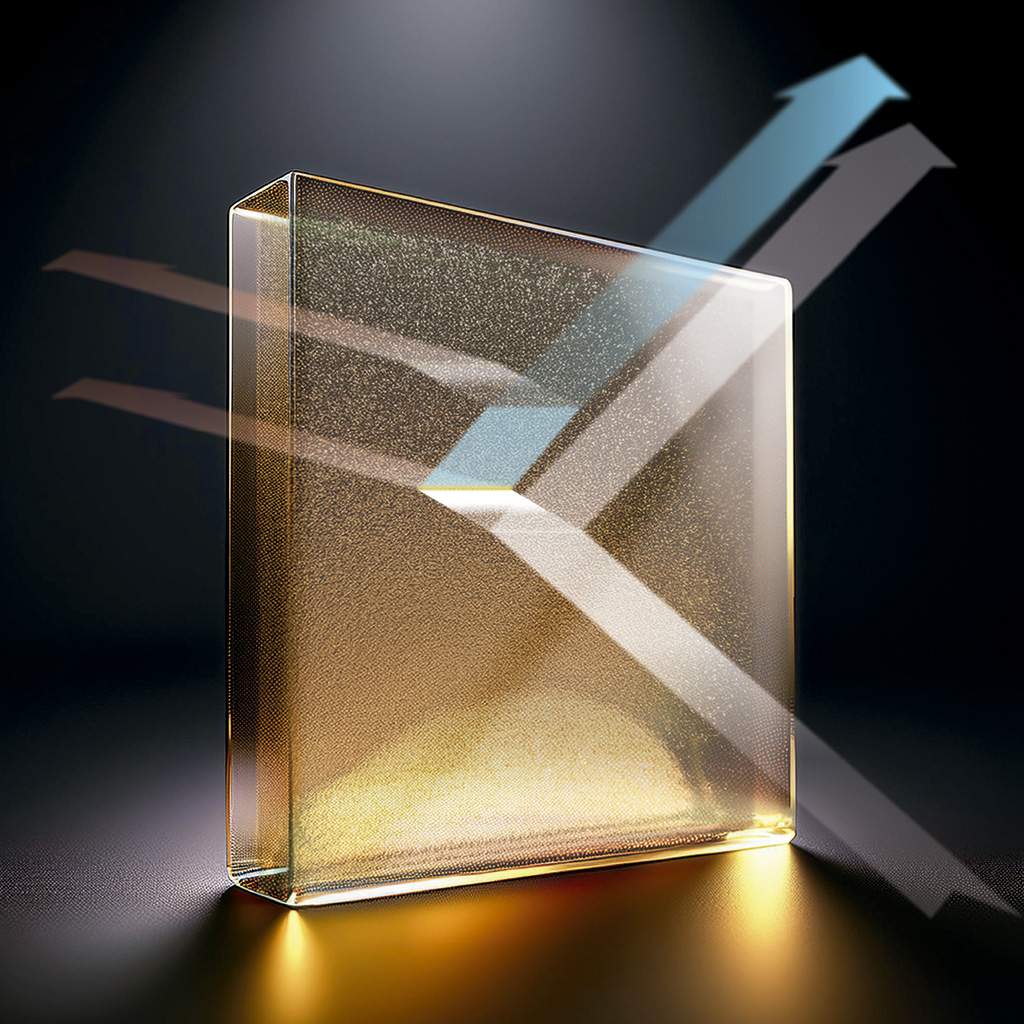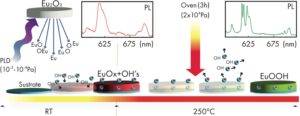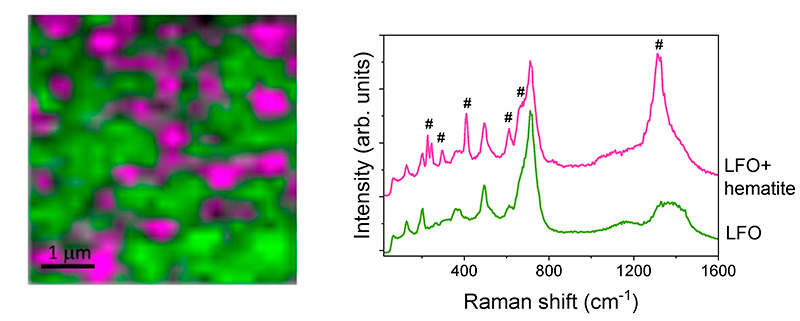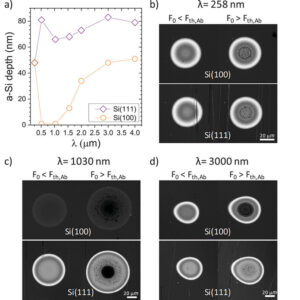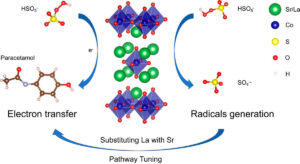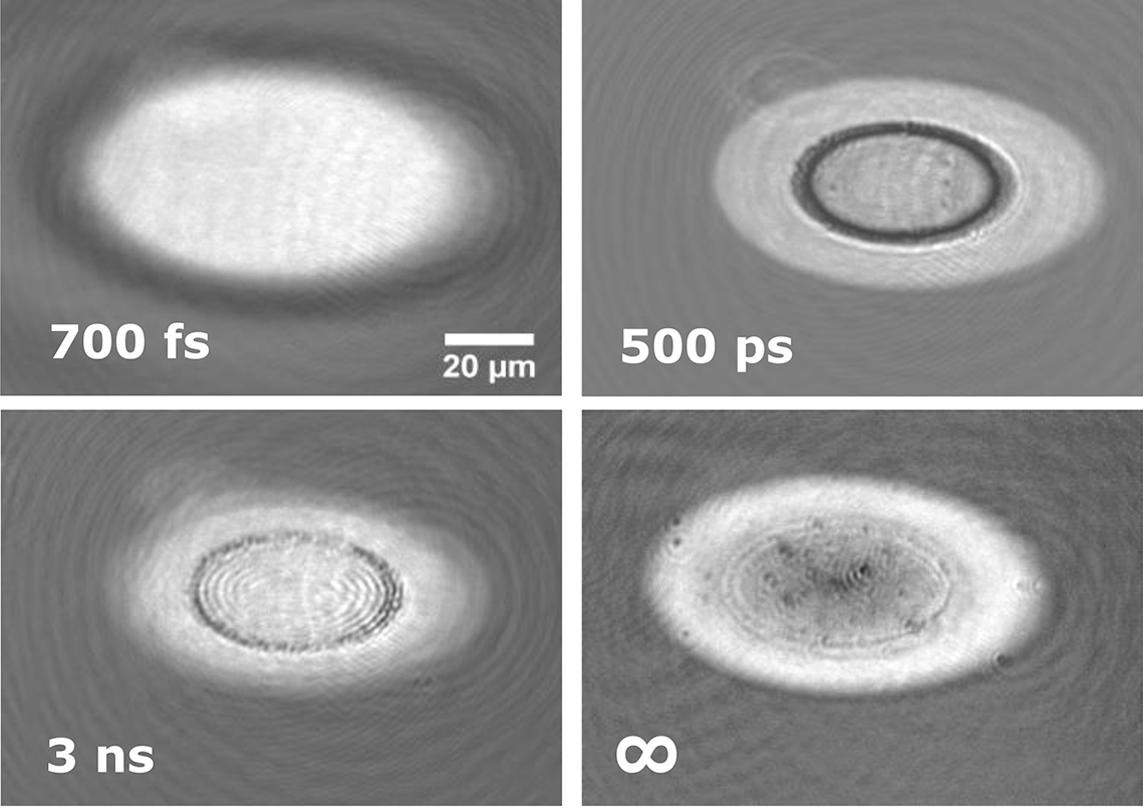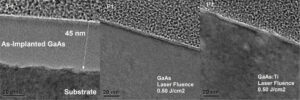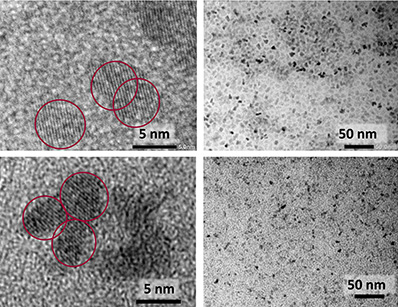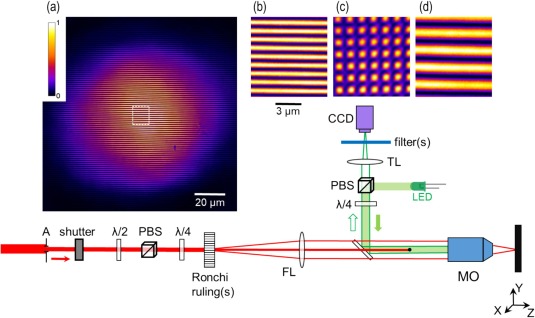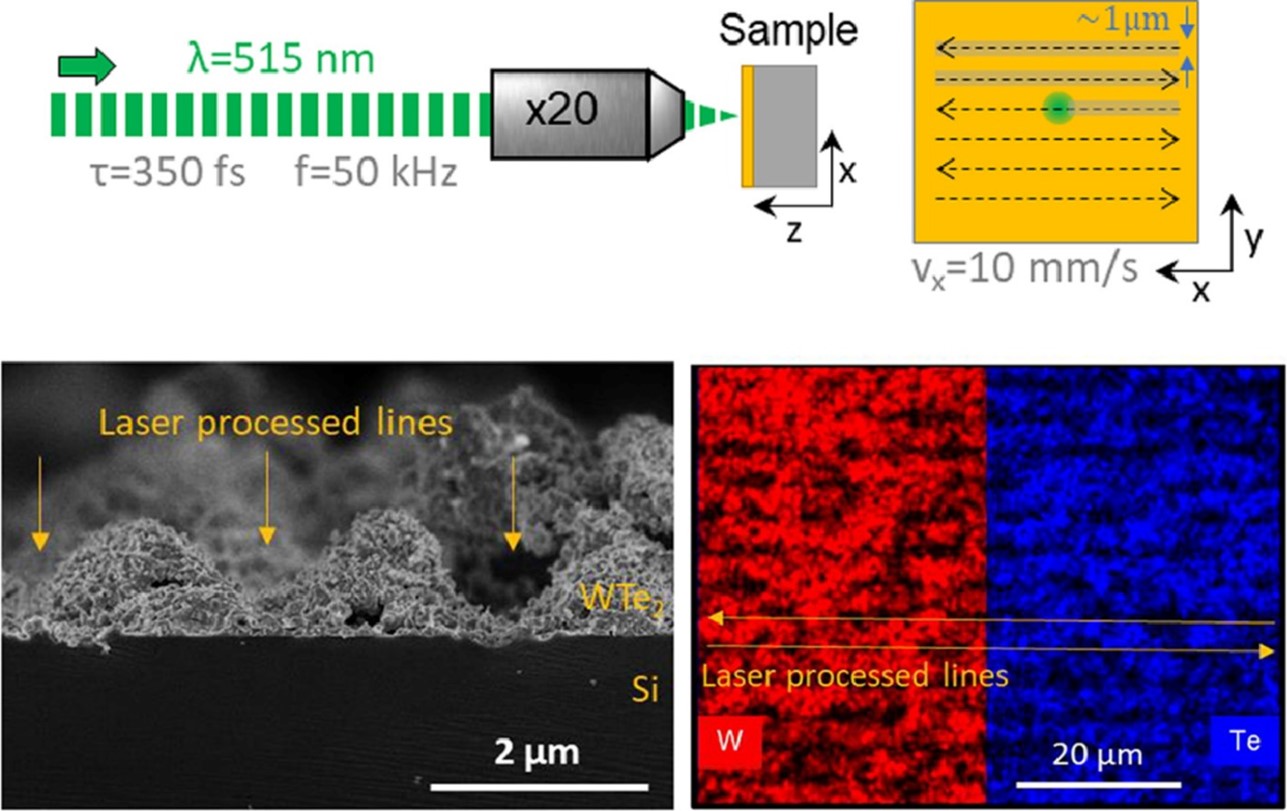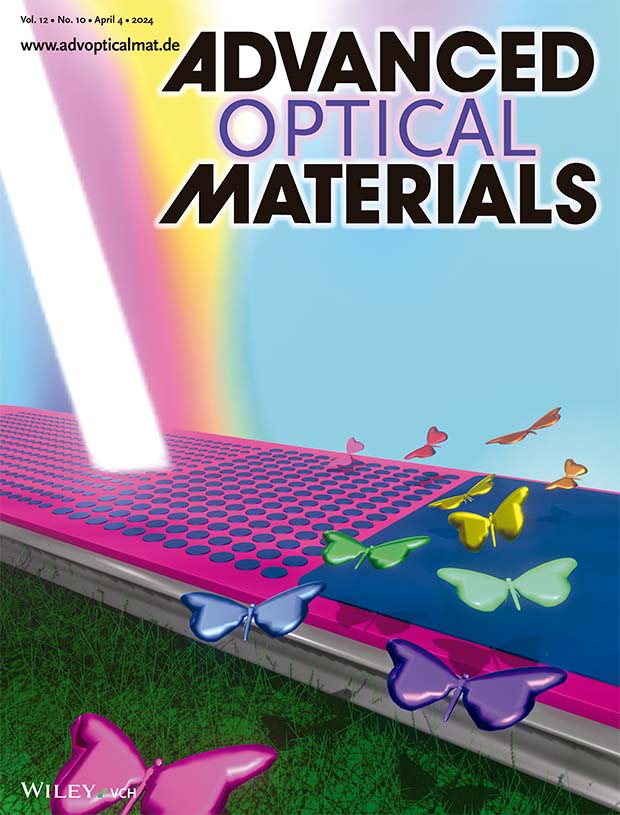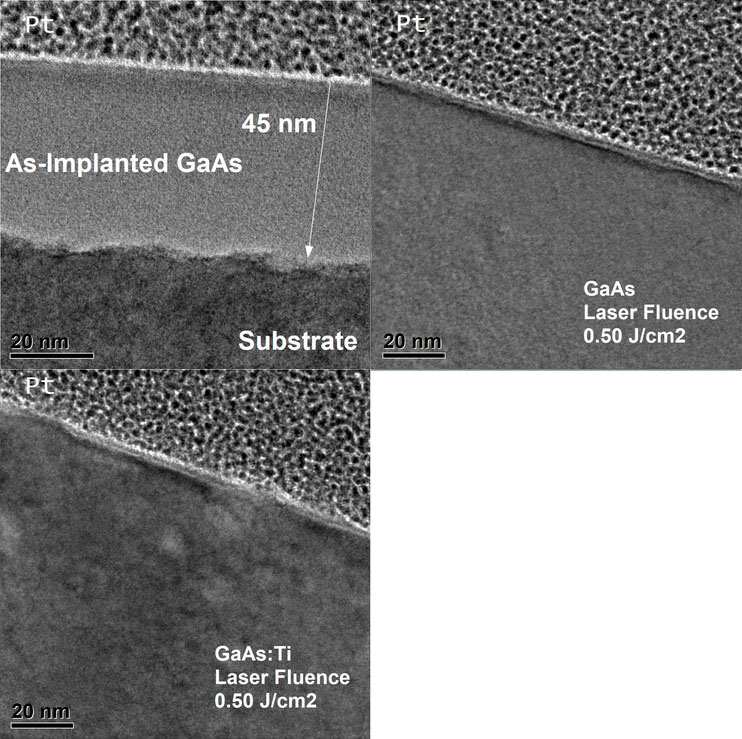2024 Publications
Optoplasmonic tuneable response by femtosecond laser irradiation of glass with deep-implanted gold nanoparticles
Materials Today Nano, 28 (2024) 100526
Abstract
Optoelectronic properties of GaP:Ti photovoltaic devices
Materials Today Sustainability Volume 28, December 2024, 101008
Abstract
Exploring OH incorporation pathways in pulsed laser deposited EuOOH thin films
Applied Surface Science, Volume 670, 15 October 2024, 160581
Abstract
Tailoring the Lithium Concentration in Thin Lithium Ferrite Films Obtained by Dual Ion Beam Sputtering
Nanomaterials Volume 14, Issue 14July 2024 Article number 1220
Abstract
Amorphization and Ablation of Crystalline Silicon Using Ultrafast Lasers: Dependencies on the Pulse Duration and Irradiation Wavelength
Laser and Photonics Reviews
Abstract
Building nanoplatelet α-MoO3 films: A high quality crystal anisotropic 2D material for integration
Applied Surface Science Volume 6721 Article number 160871
Abstract
The successful development of nanoplatelet α-MoO3 −films with wavelength-dependent in-plane and out-of-plane birefringence both in the visible and in the medium infrared is demonstrated. The films are prepared by a two-step process starting from structurally amorphous and continuous substoichiometric MoO3-X followed by isothermal annealing at low temperature (250 °C) to yield the formation of a dense network of large α-MoO3 2D nanoplatelets lying in-plane with no overlapping. These α-MoO3 crystals form a film with excellent thickness uniformity (20 nm) and are oriented with the [0 1 0] crystallographic direction parallel to the substrate normal. Finally, we report the film anisotropic optical complex refractive index, both parallel and perpendicular to the plane the full spectral range from 0.7 to 5 eV as determined by spectroscopic ellipsometry, and their characteristic in-plane phonon mode in the IR from FTIR measurements. These results show a promising pathway to the creation of highly functional anisotropic α-MoO3 2D films suitable for the development of integrated nanostructured photonic components.
Out-of-plane preferential growth of 2D molybdenum diselenide nanosheets on laser-induced periodic surface structures
Applied Surface Science. Volume 669, 22 June 2024, 160567
Abstract
Composition-dependent PMS activation in SrxLa2-xCoO4±δ perovskite-derivatives: From radical to strengthen the electron-transfer pathway
Applied Catalysis B: Environmental, 357, art. no. 124291. June 2024
Abstract
Ruddlesden-Popper phases (R-P) with the chemical formula SrxLa2-xCoO4±δ (x=0.6, 0.8, 1.0, 1.2, and 1.5), consisting of alternating layers of perovskite and rock-salt type oxides, were found to be efficient catalysts for peroxymonosulfate (PMS) activation. By modifying the strontium content, it is possible to tune the spin state of cobalt in the material, which in turn affects the PMS activation mechanism. When the rock-salt layer is intercalated in the R-P perovskite structure, as in Sr0.8La1.2CoO4, a non-radical pathway is involved, which exhibits superior performance in PMS activation, as indicated by the higher reaction rate constant (0.70 min−1) compared to LaCoO3 (0.13 min−1) with SO4•– generation as the primary mechanism.
This research provides a deeper understanding of how the electronic structure of cobalt in perovskite oxides influences the PMS activation mechanism. Such insights are crucial for the rational design of effective PMS activators for water treatment.
Dynamics of phase transformations in Si and Ge upon strong excitation with UV femtosecond laser pulses
Applied Surface Science, Volume 666, 31 May 2024
Abstract
Optical, Electrical, and Optoelectronic Characterization of Ti-Supersaturated Gallium Arsenide
Physica status solidi (a). 26 April 2024
Abstract
Unveiling the non-innocence of vanadium dopant in TiO2 nanocrystals for advanced energy storage and smart windows
JPhys Energy 6 025024
Abstract
Semitransparent Wide Bandgap Cu2ZnGe(S,Se)4 Thin-Film Solar Cells: Role of the Sulfurization Process
Solar RRL, February 2024, Volume 8, Issue 4, Article number 2300947
Abstract
Versatile femtosecond laser interference patterning applied to high-precision nanostructuring of silicon
Optics & Laser Technology. Volume 179, December 2024, 111360
Abstract
Femtosecond laser thinning for resistivity control of tungsten ditelluride thin-films synthesized from sol-gel deposited tungsten oxide
Surfaces and Interfaces. Volume 44, January 2024, 103668
Abstract
Building Conventional Metasurfaces with Unconventional Interband Plasmonics: A Versatile Route for Sustainable Structural Color Generation Based on Bismuth
Advanced Optical Materials, Volume12, Issue10. April 4, 2024
Abstract
Optical, Electrical, and Optoelectronic Characterization of Ti-Supersaturated Gallium Arsenide
Physica Status Solidi (A) Applications and Materials Science. April 26, 2024


